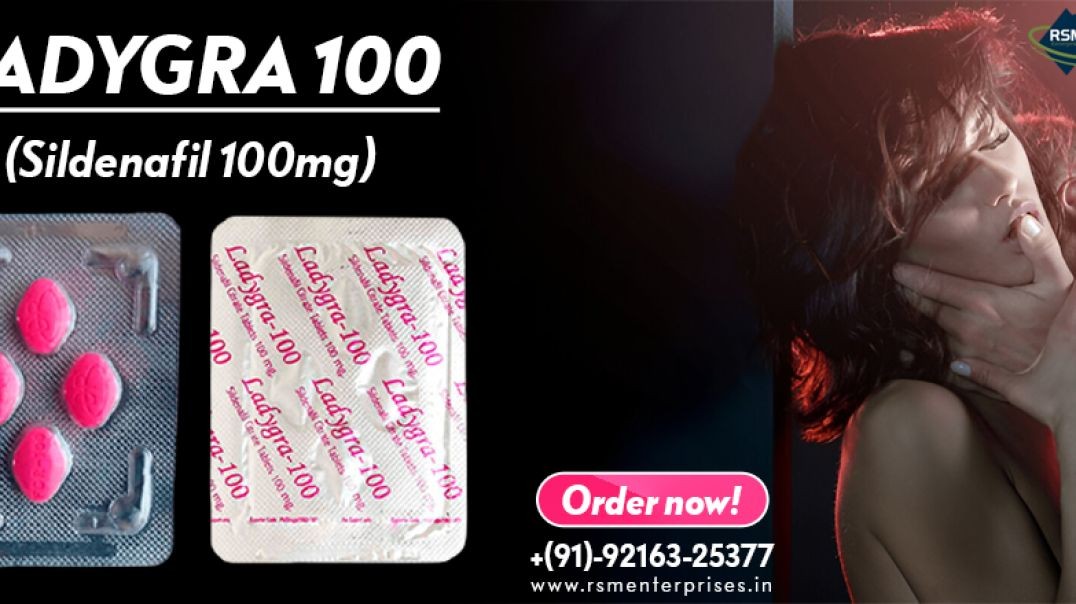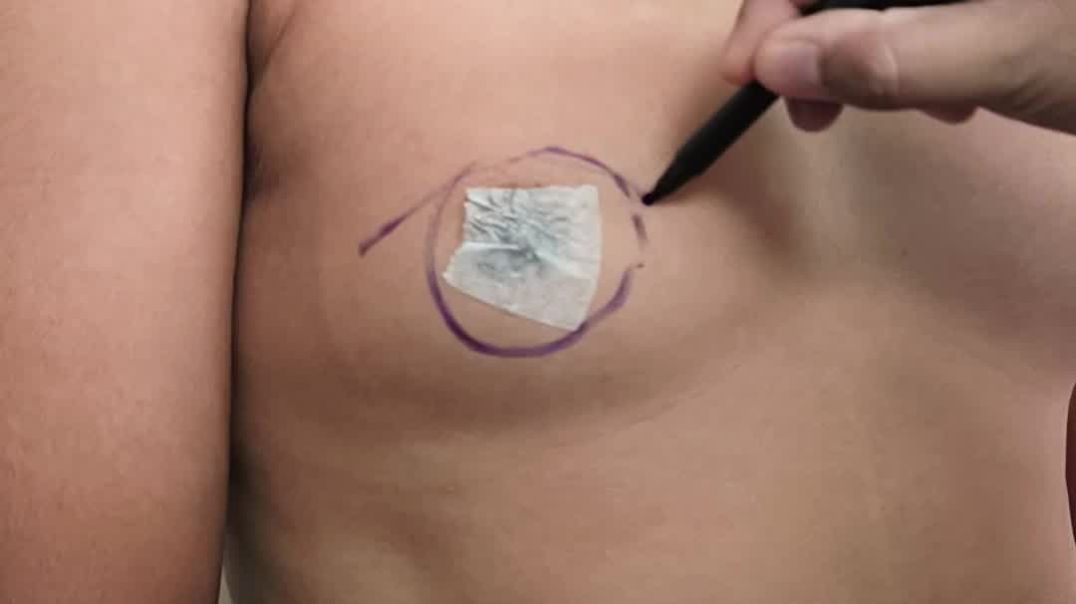Top videos
Many women have complained about huge breast size. Huge breast is not only a socially embarrassing problem but also cause pain in neck and shoulder and therefore women opt for breast reduction surgery. Let's learn more about breast reduction surgery.
Breast reduction surgery is a safe and effective medical procedure that reduces the overall size of a person’s breasts. People considering breast reduction surgery should make an appointment with a board-certified plastic surgeon and get this procedure done.
Breastfeeding after breast reduction surgery is possible, depending on the way the surgery was performed. Secondly, the sensation around the nipple and areola comes back after 6 months. This procedure is absolutely safe for the functionality of the breast.
The shape of the breast also needs to be discussed. A lot of women when they have saggy, huge breast do not have upper pole fullness and cleavage. Dr. Rajat Gupta performs surgery in such a manner that along with the desired size, the shape of the breast will also be achieved which will make it look aesthetic giving it upper pole fullness and defined cleavage.
_______________________________________
About Dr Rajat Gupta and RG Aesthetics
At RG Aesthetics, India’s best plastic surgeon, Dr Rajat Gupta is at your service! With 10 years of experience, brand-certification, and international recognition, Dr Gupta is the solution to all your contouring needs.
His expertise in liposuction techniques combined with the state-of-the-art technology available at RG Aesthetics ensures we continue providing the most reliable services with incredible, instantaneous results!
Our equipment allows for every kind of liposuction there is – especially the minimal invasive kinds. Dr Gupta reflects RG Aesthetics’ belief of the patient’s comfort always being paramount. Procedures at RG Aesthetics, under Dr Rajat Gupta, minimize trauma and speed up recovery time for the best results!
For more information please visit our website: https://www.drrajatgupta.com/
For more details,
contact us: 91-9251-711-711 or contact@drrajatgupta.com
#breastreduction #reducebreastsize #breastreductionpreparation #drrajatgupta #rgaesthetics
Buy Double X Power medication from rsmenterprises.in is used in erectile dysfunction and premature ejaculation treatment in men. The medication encompasses Buy Sildenafil 100mg and Dapoxetine in 60mg of proportion.
Buy Now : https://tinyurl.com/buy-now-doublexpower-pills
#rsmenterprises #health #healthcare #doublexpower #sildenafil100mg #dapoxetine60mg #edmedicine #genericviagra #malesensualpills
Sildigra 250mg Contains Sildenafil Citrate, which helps men achieve and maintain an erection by increasing blood flow to the penis during sexual stimulation. Today Order Now!!!
Buy Now : https://tinyurl.com/buy-sildigra-250mg
#rsmenterprises #health #healthcare #sildigra250mg #sildenafil250mg #edmedicine #genericviagra #maleviagra
Kamagra Polo is available in tablet form and is usually taken as needed before sexual activity. It's similar to Viagra in that it contains sildenafil citrate.
Buy Now : https://tinyurl.com/kamagra-polo-pills
#rsmenterprises #health #healthcare #kamagrapolo #sildenafilpolo #genericviagrapolo #maleviagrapolo
Our exclusive Vardenafil 40mg (Snovitra strong 40mg) is a medication which is suggested as a cure for male impotency which is also scientifically known as erectile dysfunction.
Buy Now : https://tinyurl.com/buy-snovitra-strong-tablets
#rsmenterprises #health #healthcare #snovitrastrong #vardenafil40mg #edmedicine #maleedmedicine
Bluemen 100 (Sildenafil 100mg) Tablets comes with luminous benefits to help enhance erectile functioning in men. It comes with an active component of Sildenafil 100mg.
Buy Now : https://tinyurl.com/buy-bluemen100mg-pills
#rsmenterprises #health #healthcare #bluemen100mg #sildenafil100mg #edmedicine #maleviagra #genericviagra
Bluemen 50mg is an effective ED treatment when used responsibly—take it about an hour before sex, limit to one dose per day, and be aware of key side effects and drug interactions.
Buy Now : https://tinyurl.com/Buy-Bluemen-50mg
#rsmenterprises #health #healthcare #bluemen50mg #sildenafil50mg #edmedicine #genericviagra #maleviagra
Ladygra 100mg is an oral medication that works to manage the problem of women's sensual disorder. It contains an active substance of Sildenafil 100mg. Its role in female sexual dysfunction is more complex.
Buy Now : https://tinyurl.com/buy-ladygra-100
#rsmenterprises #health #healthcare #womenshealth #ladygra100mg #femalesildenafil100mg #femalegenericviagra
Rhinoplasty commonly referred to as a “nose job,” is surgery to change the shape of your nose by modifying the bone or cartilage. People get rhinoplasty to repair their nose after an injury, to correct breathing problems or a birth defect, or because they’re unhappy with the appearance of their nose. In addition to the rhinoplasty surgery benefits of these types of procedures, the effects can be experienced in almost all areas of life.
Mr Raj, cinematographer and actor consulted Dr Rajat Gupta For Rhinoplasty surgery. He was not happy with the shape of his nose . He travelled all the way from Hyderabad to Delhi for this surgery. He consulted Dr Rajat, and he guided him . Dr Rajat assured him he will get the desired natural-looking results.
Mr Raj was very happy with his experience in the hospital. He felt really homely. He is thankful to Dr Rajat Gupta and is extremely happy with the results.
______________________________________
About Dr Rajat Gupta and RG Aesthetics
At RG Aesthetics, India’s best plastic surgeon, Dr Rajat Gupta is at your service! With 10 years of experience, brand certification, and international recognition, Dr Gupta is the solution to all your contouring needs.
His expertise in liposuction techniques combined with the state-of-the-art technology available at RG Aesthetics ensures we continue providing the most reliable services with incredible, instantaneous results!
Our equipment allows for every kind of liposuction there is – especially the minimally invasive kinds. Dr Gupta reflects RG Aesthetics’ belief of the patient’s comfort always being paramount. Procedures at RG Aesthetics, under Dr Rajat Gupta, minimize trauma and speed up recovery time for the best results!
#rhinoplasty #nosejob #patientreview #drrajatgupta #rgaesthetics
Women experience unwanted changes in the size, shape, and position of their breasts over time due to certain life events. Fortunately, cosmetic surgery offers women the often life-changing opportunity to restore or achieve their figure through breast augmentation, breast lift, and other complementary procedures. With the multitude of treatment options available, it can often be difficult for patients to determine which procedure may be best suited to their individual needs, whether its breast augmentation or breast lifting. Let us understand the difference between Breast Lift and Breast Augmentation.
Breast lift is known as mastopexy surgery whereas breast augmentation is a mastopexy augmentation. Some women require breast augmentation and some need breast lifting. There are some who might need both breast lifting and breast augmentation. But it's confusing for patients to opt for these procedures.
Breast Augmentation In Sagging Breast Vs Normal Breast
There might be many issues regarding the size and shape of the female breasts. Let us understand what are their issues and what type of surgery they should opt for.
1. Breast Sagging
Causes of Breast sagging
- Post pregnancy
-Weight Loss
-Heavy size of the breast
Breast sagging can be corrected with the Breast Lift Surgery or Mastopexy. Breast lift surgery is designed specifically to improve the position of the breasts. Mastopexy removes and tightens excess tissue and repositions the nipple and areola to raise sagging breasts. In this surgery size of the breast is not changed.
2. Small breasts
Causes of Small Breast
-Post pregnancy
-Breast development at puberty.
If any woman has, small breast size then Breast Augmentation Surgery is performed in order to increase breast size.
Two types of Breast Augmentation Procedure
-Implants
-Fat Transfer
3. Breast sagging + Small Breasts
Mastopexy Augmentation Surgery is performed in this case as the breasts are lifted as well as their size is increased.
Patients should keep in mind that breast sagging does not require breast augmentation procedure as it will in turn lead to more sagging due to more fats.
The patients who want to undergo both the surgeries, of Breast Augmentation and Breast lifting, should discuss with their doctor whether they want to go for both the surgeries at the same time or maybe do it one by one.
All these three procedures are different, all three surgeries are done in a different way Also the scars are different for all three. The technique used during surgery is the lollipop scar technique.
A woman suffering from sagging need to undergo breast lifting surgery, a woman with small breast need to undergo breast augmentation and woman who has sagging breast, as well as small breast, need to undergo Mastopexy Augmentation Surgery.
_______________________________________
About Dr Rajat Gupta and RG Aesthetics
At RG Aesthetics, India’s best plastic surgeon, Dr Rajat Gupta is at your service! With 10 years of experience, brand-certification and international recognition, Dr Gupta is the solution to all your contouring needs.
His expertise in liposuction techniques combined with the state-of-the-art technology available at RG Aesthetics ensures we continue providing the most reliable services with incredible, instantaneous results!
Our equipment allows for every kind of liposuction there is – especially the minimal invasive kinds. Dr Gupta reflects RG Aesthetics’ belief of the patient’s comfort always being paramount. Procedures at RG Aesthetics, under Dr Rajat Gupta, minimize trauma and speed up recovery time for the best results!
For more information please visit our website: https://www.drrajatgupta.com/
For more details,
contact us:+91-9251-711-711 or contact@drrajatgupta.com
#breastlifting #breastaugmentation #plasticsurgeon #drrajatgupta
A great product that has helped numerous individuals enjoy more sensual fulfillment and pleasure is Kamini Oral Jelly. It is a premium product that is created to enhance sensuous function in men and women and has been found helpful by various satisfied customers. You can buy Kamini 100mg oral jelly online in Australia. Kamini Oral Jelly's quick-acting formula, through which customers feel the needed effects within a very short period of time, is one of its key benefits. It is thus an excellent choice for individuals seeking an effective and reliable means of addressing their sensual problems.Kamini Oral Jelly's ease of application is another excellent advantage. Compared to other therapy designed for sensual arousal, which requires complex processes or difficult regimens, Kamini Oral Jelly is very convenient to use. Simply consume the jelly before indulging in sensual activities and enjoy the advantages. Moreover, Kamini Oral Jelly consists of organic components, making it distinct from other chemical-based products available today as a safe and healthy alternative. This means that consumers will not need to fear from dangerous side effects or harmful effects on their health in order to avail themselves of Kamini Oral Jelly's benefits.Buy Kamini 100mg oral jelly online at our web store https://www.firstchoicemedss.c....om/buy-kamini-oral-j
Are the cosmetic surgery terms such as liposuction, liposculpture and hi-def liposuction confusing to you? What are these technologies?
This video opens up new horizons on liposuction procedures and their technological advancements in terms of lipo-sculpting and high-definition procedures that are helping many patients get their desired body shape.
Watch this video to know more.
#liposuction #liposculpture #highdefinitionliposuction #3dliposuction #4Dliposuction
-----------------------------------------------------------------------------------------------------
About Dr. Rajat Gupta and RG Aesthetics
At RG Aesthetics, India’s best plastic surgeon, Dr. Rajat Gupta is at your service! With 13 years of experience, brand certification, and international recognition, Dr. Gupta is the solution to all your contouring needs.
His expertise in liposuction techniques combined with the state-of-the-art technology available at RG Aesthetics ensures we continue providing the most reliable services with incredible, instantaneous results!
Our equipment allows for every kind of liposuction there is – especially the minimally invasive kinds. Dr. Gupta reflects RG Aesthetics’ belief of the patient’s comfort always being paramount. Procedures at RG Aesthetics, under Dr. Rajat Gupta, minimize trauma and speed up recovery time for the best results!
Kamagra Oral Jelly 100mg has been utilized for the treatment of male erectile dysfunction. Kamagra Oral Jelly 100mg includes Sildenafil Citrate, a very effective known sensual performance-enhancing medication. Kamagra oral jelly is a specific type of drug since it is designed to be ingested orally, hence the product is able to dissolve slowly in the blood.You can buy Kamagra 100mg Oral Jelly online in Australia.Likely most among the benefits that render Kamagra Oral Jelly more convenient is the ease of use. It does not entail swallowing oral administration of other erectile dysfunction products with water; instead, one can put a small amount into their mouth by squeezing out the jelly from its sachet. This makes it the ideal option for men who have difficulty swallowing pills or for people who require a fast and discreet way of boosting their sensual performance. Another advantage of Kamagra Oral Jelly is that it works.The medicine produces its effect by soothing the blood vessels of the male genitals, encouraging increased blood flow and harder erection. Overall, Kamagra Oral Jelly is relatively safe and effective way of treating erotic sickness that has the potential to improve the erotical health and confidence of men.Buy Kamagra 100mg Oral Jelly online at our web store https://www.firstchoicemedss.c....om/kamagra-oral-jell
For more information, please visit our website: https://www.drrajatgupta.com/
Getting a nose job in Delhi was never more accessible and more efficient than it is under the care of board-certified plastic surgeon Dr. Rajat Gupta and at RG Aesthetics!
If you are insecure about your nose because of a deviated septum, a nasal deformity, or any other factor, our rhino-septoplasty procedure is perfect for you! Dr. Gupta uses his ten years of experience to combine rhinoplasty and septoplasty, so you get a better, more natural, and aesthetic result! Keeping the recovery period as short as possible, he gives you the confidence boost you deserve by removing any imperfection and giving you the narrow, sharp nose you deserve!
Watch the full video for detail information.
Related Videos:
1. Rhinoplasty/Nose Job करने से पहले किन चीज़ों का ध्यान रखे : https://youtu.be/ocsJePU0uWA
2. How Much Does the Rhinoplasty Cost?: https://youtu.be/tdENhcJcLro
For more details, contact us on +91-9251-711-711 or contact@drrajatgupta.com
––––––––––––––––––––––––––––––––––
About Dr. Rajat Gupta and RG Aesthetics
At RG Aesthetics, India’s best plastic surgeon, Dr. Rajat Gupta is at your service! With 10 years of experience, brand-certification, and international recognition, Dr. Gupta solves all your contouring needs.
His expertise in liposuction techniques combined with the state-of-the-art technology available at RG Aesthetics ensures we continue providing the most reliable services with incredible, instantaneous results!
Our equipment allows for every kind of liposuction there is–especially the non-invasive kinds. Dr. Gupta reflects RG Aesthetics’ belief of the patient’s comfort always being paramount. Procedures at RG Aesthetics, under Dr. Rajat Gupta, minimize trauma and speed up recovery time for the best results!
Thanks!
#rhinoplasty #drrajatgupta #cosmeticsurgery
Super vidalista 80mg contains a combination of two strong drugs: tadalafil (20mg) and dapoxetine.These two work together to successfully treat erectile dysfunction and premature ejaculation in men.What an amazing medicine, isn't it? You can treat both your issues with one product.Tadalafil treats erectile dysfunction, while dapoxetine treats premature ejaculation.This product is specifically designed for men, not women and children.This product is very effective, popular, and commonly found in the market too You can buy Super Vidalista 80 mg online. If you are having these two concerns, then you can use this medicine but only after consulting with a doctor.Super vidalista contains a higher dose, so begin with a low one as recommended.You need to go through the pre-requisites prior to using this medicine to evade any grave side effects or complications. As aforementioned, this medicine has some advantages but also some modest side effects, so in case you are having any severe ones, visit your doctor immediately and discontinue the use of it.Centurion Laboratories Pvt Ltd produces and markets this medication.Buy Super Vidalista 80mg online at our web store https://www.firstchoicemedss.c....om/super-vidalista-8
Gynecomastia is classified into different grades in India, depending on the size and type of tissue. In Grade 2 cases, the gland can feel either hard like a stone or soft like fat. It usually sits in the center of the chest. Many patients experience a mix of fat and gland tissue, making surgical correction necessary.
Visit- https://www.divinecosmeticsurg....ery.com/gynecomastia
#gynecomastiasurgery #gynecomastiabeforeandafter #gyno #dramitgupta #divinecosmeticsurgery
Recovery after Liposuction or Body Contouring Procedures | Dr. Rajat Gupta, Cosmetic Plastic Surgeon
For more information, please visit our website: https://www.drrajatgupta.com
The recovery from liposuction in Delhi under Dr. Rajat Gupta takes two weeks. After this, you return to normal and resume daily life completely. Because of the modern MicroAire and VASER technologies we use at RG Aesthetics, Dr. Gupta gives you a pain-free contour. Most of his patients have only reported mild discomfort after their body-contouring surgery,
which is managed with necessary painkillers?
As a board-certified plastic surgeon, Dr. Gupta has performed over 2000 body-contouring procedures. His patients go home in the evening after the surgery or in the morning, the next day, after overnight hospitalization.
They resume their daily duties from the next day and return to the office after 2-3 days. Lymphedema massages to reduce the swelling and bruising also begin. These massages stop after 3-4 months. After a week, they can resume light cardio, followed by weight exercises after two weeks.
Patients also wear a custom-made compression garment that ensures the skin sticks to the underlying muscle, which comes off after six weeks. By 2 weeks, 70-80% of the swelling is gone. It takes up to 6 months for the complete resolution of swelling. But after this, you get your new body in all its beauty, with natural results and a gorgeous contour!
Watch the full video for detailed information.
Related Videos:
1. Understand 'What is liposuction & its Benefits: https://youtu.be/jjHQC20g4ZA
2. How much Fat can Liposuction Remove at 1setting? https://youtu.be/YBpp2LmiF-Q
For more details, contact us on +91-9251-711-711 or contact@drrajatgupta.com
_______________________________________
About Dr. Rajat Gupta and RG Aesthetics
At RG Aesthetics, India’s best plastic surgeon, Dr. Rajat Gupta is at your service! With 10 years of experience, brand-certification, and international recognition, Dr. Gupta solves all your contouring needs.
His expertise in liposuction techniques combined with the state-of-the-art technology available at RG Aesthetics ensures we continue providing the most reliable services with incredible, instantaneous results!
Our equipment allows for every kind of liposuction there are–especially the non-invasive kinds. Dr. Gupta reflects RG Aesthetics’ belief of the patient’s comfort always being paramount. Procedures at RG Aesthetics, under Dr. Rajat Gupta, minimize trauma and speed up recovery time for the best results!
Thanks!
#plasticsurgery #drrajatgupt #postbodycontouringsurgery #aftercare
In this video, we will answer the burning question: how is the complete gland removed through an innovative and unique gynecomastia surgery technique with a 3-4 mm small cut without any visible scar?
Gynecomastia is the enlargement of breast tissue in males that causes self-consciousness and frustration. But gynecomastia surgery helps to remove excess breast tissue to create a more masculine chest contour, enhancing appearance and boosting self-confidence.
We use the latest and modern tools named: MicroAire, VASER – Ultrasonic Assisted tool, and BodyTite tool for high definition finishing. This video explains how modern tools are used to remove the glands completely and tighten the skin further to give a masculine look without giving any visible scars on the chest.
Watch this complete video to clear all your doubts about your gynecomastia surgery and scars. If you have any queries about gynecomastia surgery, drop them in the comment section.
#malebreastreduction #noscars #confidenceboost #chestsculpting #cosmeticprocedure #bodycontouring #GlandRemoval
-----------------------------------------------------------------------------------------------------
About Dr. Rajat Gupta and RG Aesthetics
At RG Aesthetics, India’s best plastic surgeon, Dr. Rajat Gupta is at your service! With 13 years of experience, brand certification, and international recognition, Dr. Gupta is the solution to all your contouring needs.
His expertise in liposuction techniques combined with the state-of-the-art technology available at RG Aesthetics ensures we continue providing the most reliable services with incredible, instantaneous results!
Our equipment allows for every kind of liposuction there is – especially the minimally invasive kinds. Dr. Gupta reflects RG Aesthetics’ belief of the patient’s comfort always being paramount. Procedures at RG Aesthetics, under Dr. Rajat Gupta, minimize trauma and speed up recovery time for the best results!
Are you considering gynecomastia and wondering about the risks involved in it? So, watch this video till the end, as we discuss all the risks and complications involved in gynecomastia and how to prevent them.
In this video, we will elaborate on the following risks in detail:
✅Bleeding
✅Infection
✅Shape of your chest after surgery
✅Saggy skin
✅Scarring after procedure
So, if you have any questions regarding gynecomastia, contact us, and we will be more than happy to assist you.
#gynecomastia #manboobsurgery #drrajatgupta #plasticsurgeondelhi #skintightening #malebreast #gynecomastiatreatment
------------------------------------------------------------------------------------------------------------------------
About Dr. Rajat Gupta and RG Aesthetics
At RG Aesthetics, India’s best plastic surgeon, Dr. Rajat Gupta is at your service! With 13 years of experience, brand certification, and international recognition, Dr. Gupta is the solution to all your contouring needs.
His expertise in liposuction techniques combined with the state-of-the-art technology available at RG Aesthetics ensures we continue providing the most reliable services with incredible, instantaneous results!
Our equipment allows for every kind of liposuction there is – especially the minimally invasive kinds. Dr. Gupta reflects RG Aesthetics’ belief of the patient’s comfort always being paramount. Procedures at RG Aesthetics, under Dr. Rajat Gupta, minimize trauma and speed up recovery time for the best results!
Schedule a Consultation:
✅ Call: +91 - 9251-711-711
✅ contact@drrajatgupta.com
✅ Visit: https://www.drrajatgupta.com
✅https://www.instagram.com/rajatguptadr
✅https://www.facebook.com/drrajatgupta/
✅https://www.linkedin.com/in/rajat-gupta-9a6b23119/
A product that has helped numerous individuals in indulging in more sensual satisfaction and pleasure is Kamini Oral Jelly. This premium product is formulated to enhance sensuous action in men and women, and it has been found helpful by various satisfied customers. The quick-acting formulation of Kamini Oral Jelly, which allows users to experience the intended results in no time, is one of its principal benefits. Such, it is a great choice for individuals who are searching for a reliable and effective means of addressing their sensual problems. Easy application of Kamini Oral Jelly is another wonderful advantage. Unlike other treatments aimed for sensual improvement, which require complex processes or demanding routines, Kamini Oral Jelly is very easy to use. Simply consume the jelly before indulging in sensual activity and enjoy the benefits. Furthermore, Kamini Oral Jelly consists of natural ingredients, making it stand out from other artificial products available as a safe and healthy alternative. This means that customers will not have to concern themselves with toxic side effects or harmful effects on their health in order to enjoy the advantages of Kamini Oral Jelly. All in all, Kamini Oral Jelly is a wonderful product that has improved the sensual experiences of many people and boosted their relationship satisfaction significantly.Buy Kamini 100mg Oral Jelly online at our web store https://www.firstchoicemedss.c....om/buy-kamini-oral-j




















